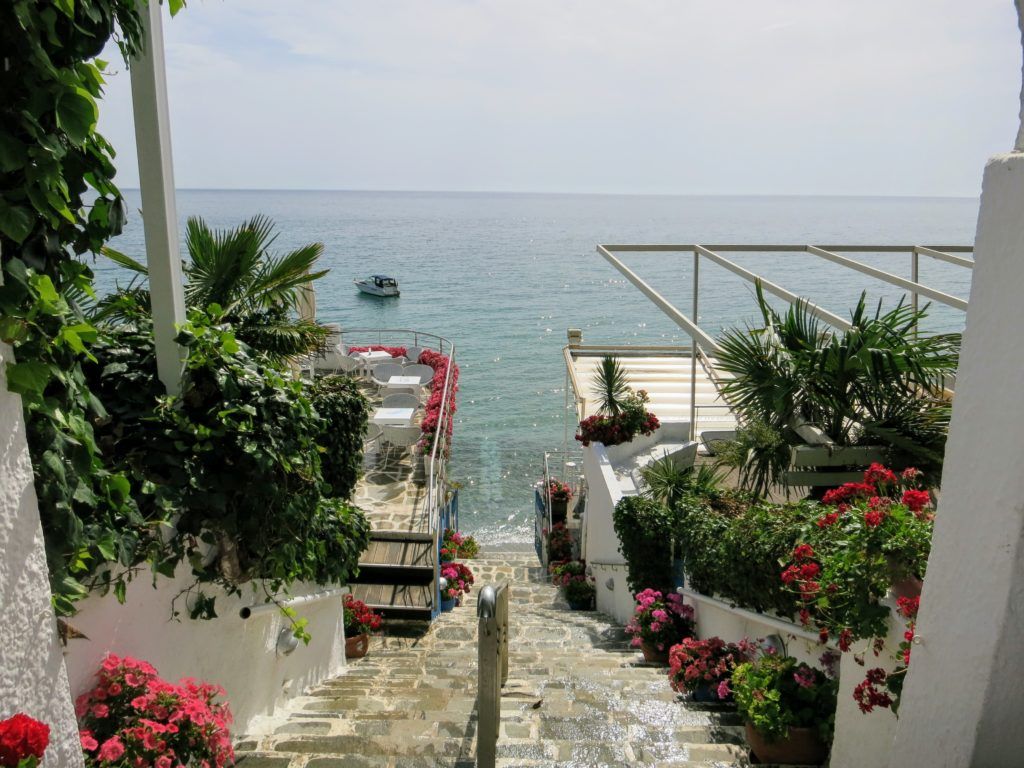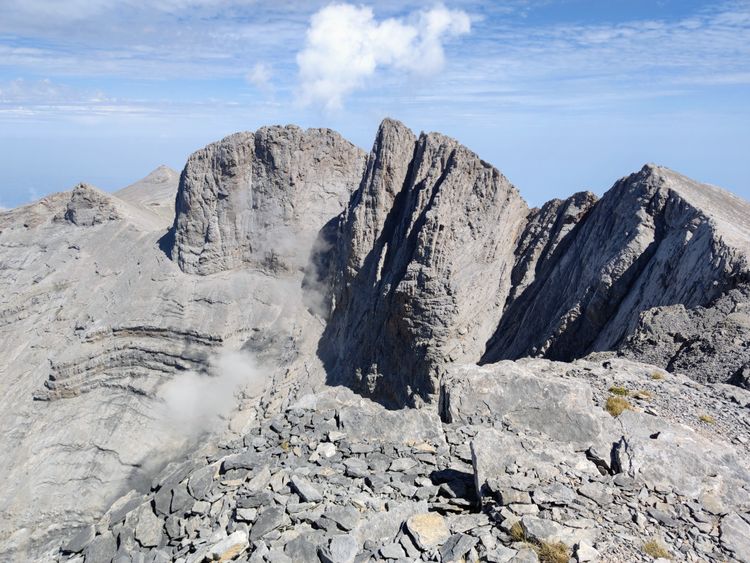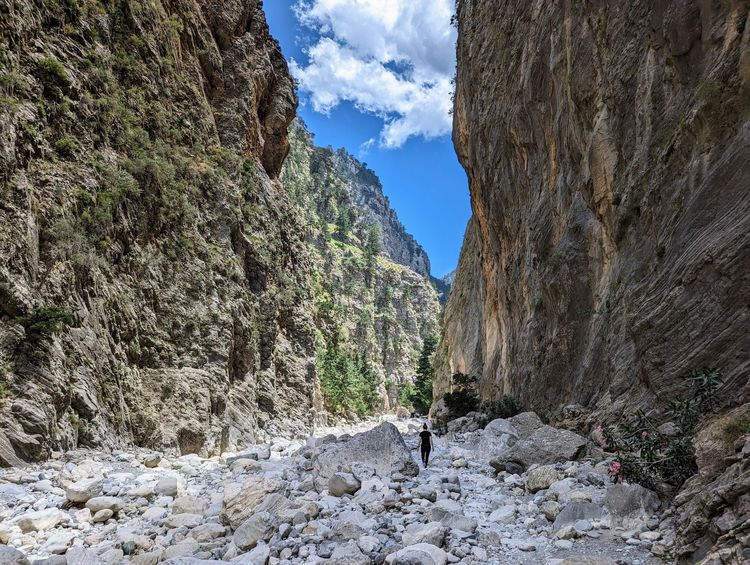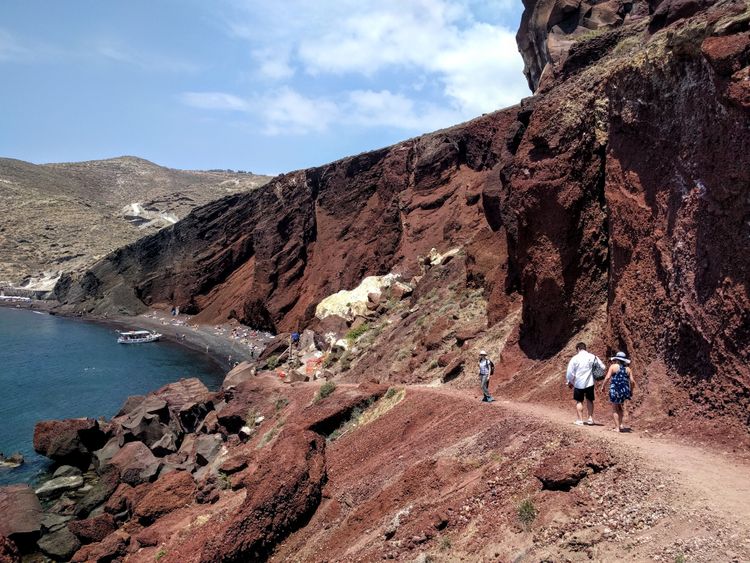How to climb Mount Olympus in Greece
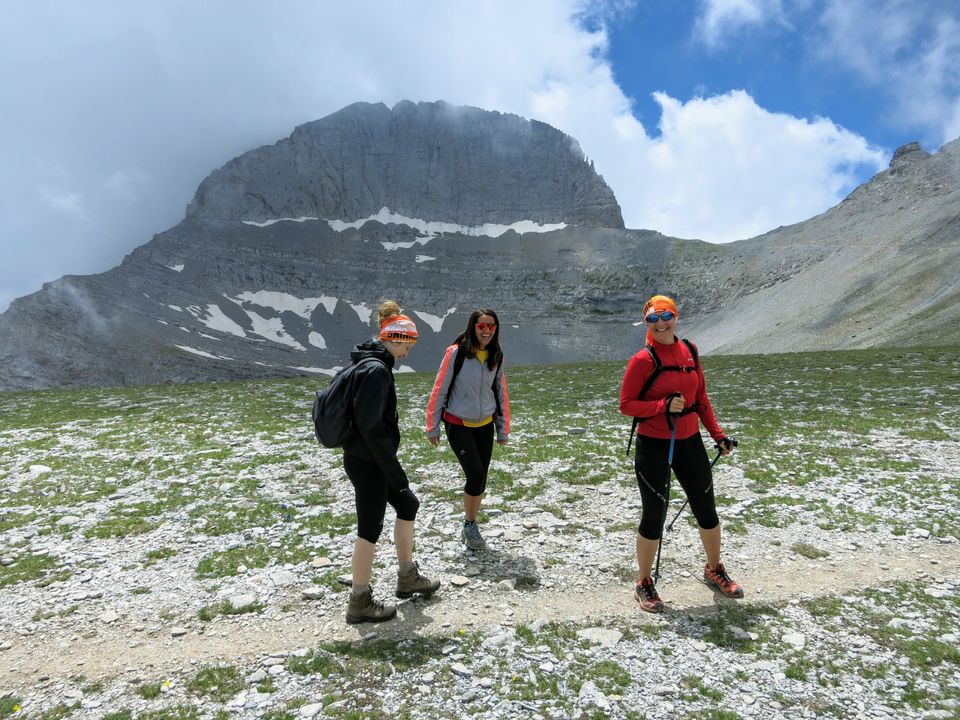
This is a guide on how to climb Mount Olympus in Greece. Continue reading to find out the fastest way to reach Mytikas and how to get the most out of your hiking trip to the highest mountain in Greece, in two or more days.
I’ve always been a fan of Greek mythology, enjoyed reading the Greek myths and legends, impatiently waited for the next episode of the Hercules TV series and I would play the Disney’s Hercules action game anytime.
However, when someone asked me a few years back:
Hey, would you be interesting in running the Mount Olympus Marathon in Greece?
I was surprised, to say the least.
Is Mount Olympus real?
I knew the ancient Greeks considered Mount Olympus to be the palace of Zeus and all the other Olympian Gods, however, pardon my ignorance, I never asked myself whether Mount Olympus was real, let alone if it’s possible to climb it.
Mount Olympus is the highest mountain in Greece
I was both happy and amazed to find out that not only Mount Olympus is indeed real, but, even more, it is the highest mountain in Greece, with several peaks exceeding 2900 meters.
Mount Olympus has one of the highest topographic prominence in Europe
What does topographic prominence mean? Well, in short, it tells how tall a mountain is compared to its surroundings. Mount Olympus has an impressive topographic prominence of 2353 meters
Mount Olympus is very close to the sea
The trailhead in Litochoro is only 6 km away from the Aegean Sea. The ancient village of Dion, from where the Olympus Marathon starts, is located only 5 meters above the sea level.
All this makes hiking Mount Olympus in Greece the perfect sea to summit adventure. You can literally start your hike below the sea level while taking a swim in the Aegean Sea and then be at 2918 meters above sea level, on Mytikas – the highest peak of Mount Olympus. Both in the same day.
How hard is it to climb Mount Olympus?
Mount Olympus has a plateau at around 2700 meters and 3 peaks higher than 2900 meters: Stefani (2909 m), Skolio (2911 m) and Mytikas (2918 m), with Stefani being the least accessible.
Most hikers will need to spend at least one night in the mountain regardless if they aim for Mytikas or just the plateau.
Reaching Skala Peak – moderate hike, non-technical
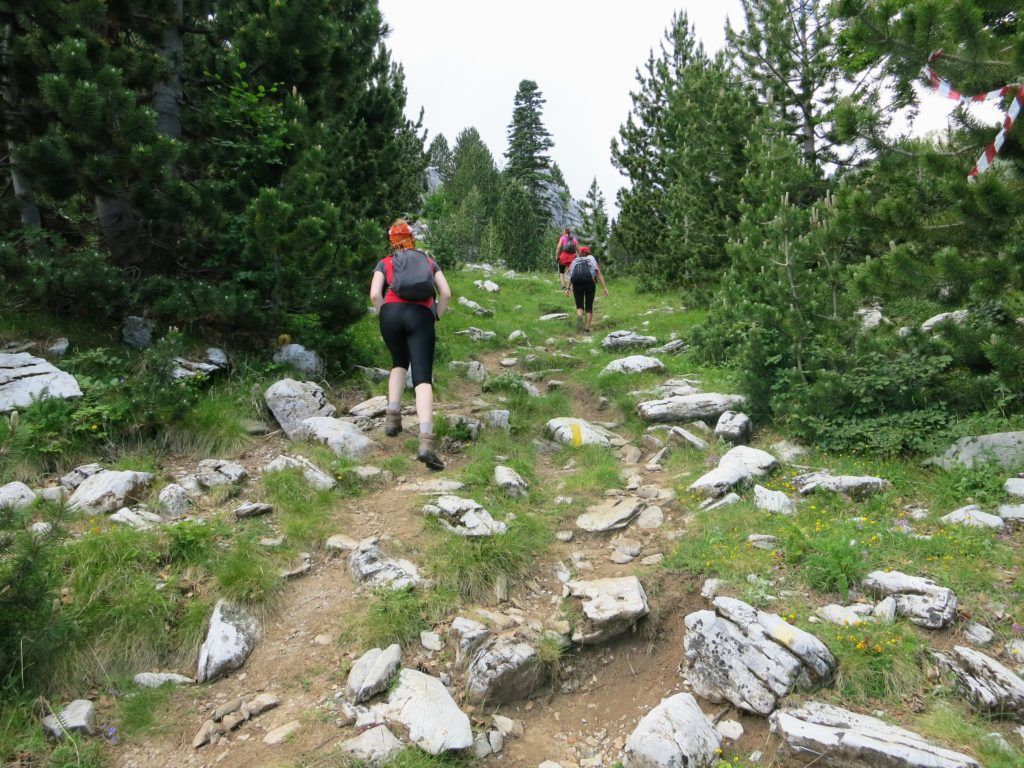
The hike up to Skala (2882 m), a peak located between Mytikas and Skolio is strenuous, but is not technically challenging. So, even if you are afraid of heights, you can still reach an impressive altitude and enjoy the spectacular views from the top of Mount Olympus.
The good news is that Skala is located between Mytikas and Skolio and is the starting point for the easiest routes to each peak, so you can decide on the spot whether you want to continue the climb or not.
Reaching Mytikas – the summit of Mount Olympus (hard)
In order to reach Mytikas and Skolio, you will have to climb using your hands (rock scramble). The climb is breathtaking and it’s not recommended to go alone if you are afraid of heights.
The climb to Mytikas is rated as a YDS class 3 rock scramble, which means scrambling with increased exposure, handholds are necessary and falls could easily be fatal. The climb to Skolio is slightly easier and is part of the E4 route.
This tricky ascend may be the reason why Mytikas, the highest peak of Mount Olympus was only conquered in 1913 by a team lead by the Greek mountain hunter Christos Kakalos.
- Note: You can climb Mount Olympus in one day if you are fit! If you are ready for a 10-hours hike of around 20 km with at least 2200 meters of elevation gain, find out the fastest way to get on top of Mount Olympus.
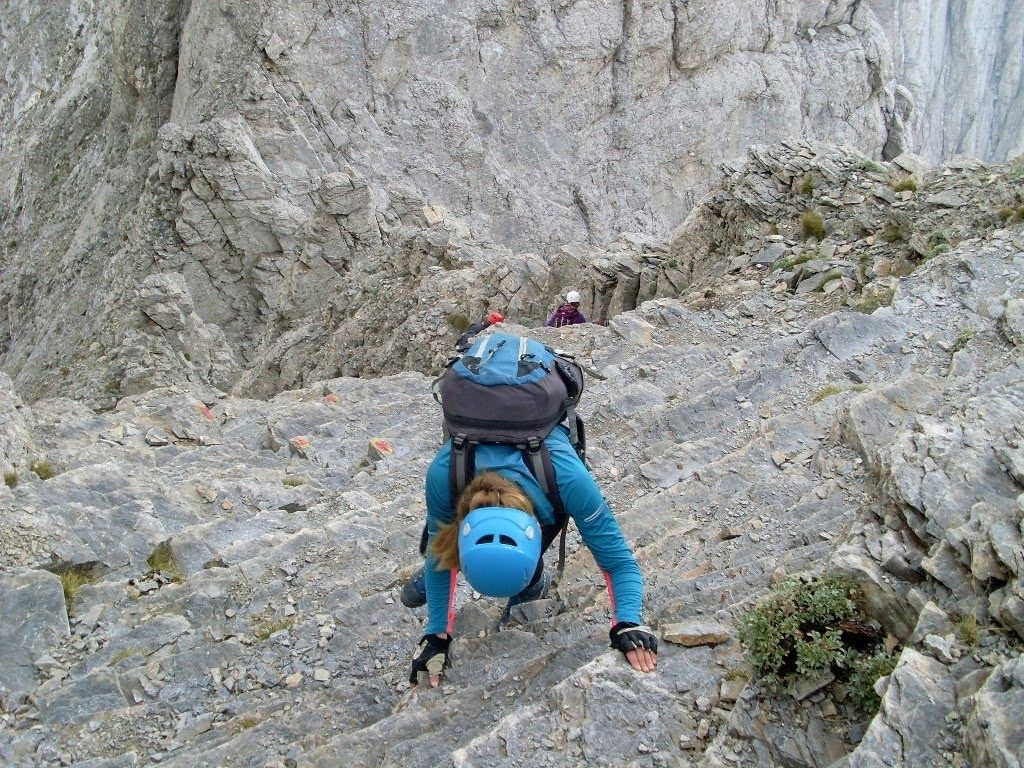
How to get to the top of Mount Olympus
In order to climb the highest peaks of Mount Olympus, you first have to ascend to the altitude of around 2700 meters. Up until this point, the path doesn’t pose any technical challenges, except for the fact that it is long and quite steep. The heat and the humidity will make the hike even more strenuous.
The highest you can get just by walking is at Skala Peak (2882 m). From Skala you can then scramble your way to either Mytikas (2918 m) or Skolio (2911 m).
It takes about 1 hour to get from Skala to Mytikas even though they are only 400 meters apart.
Equipment
You won’t need any climbing equipment for reaching Mytikas or Skolio, except for helmets, which are recommended or even mandatory if you want to ascend via the Louki Corridor.
Wear good hiking shoes. Boots are recommended if there still is snow on the trails, especially at Zonaria – a narrow path that connects Refuge C to the E4 route, below Skala Peak.
If you want to descent from Mytikas to Zonaria via the steep Louki Corridor helmets are mandatory. The climbers above you may displace rocks.
Make sure to have 3 layers of clothes in your backpack because it could be very hot at the start of the trail, but extremely cold above the altitude of 2500 meters.
Carry at least 4 liters of water for each person.
Weather
Since Olympus is a high mountain, the weather on the top can be unpredictable. The best time to climb Mytikas is from July to September.
Only attempt to climb the peaks above 2800 meters in good weather.
You can check the weather forecast here.
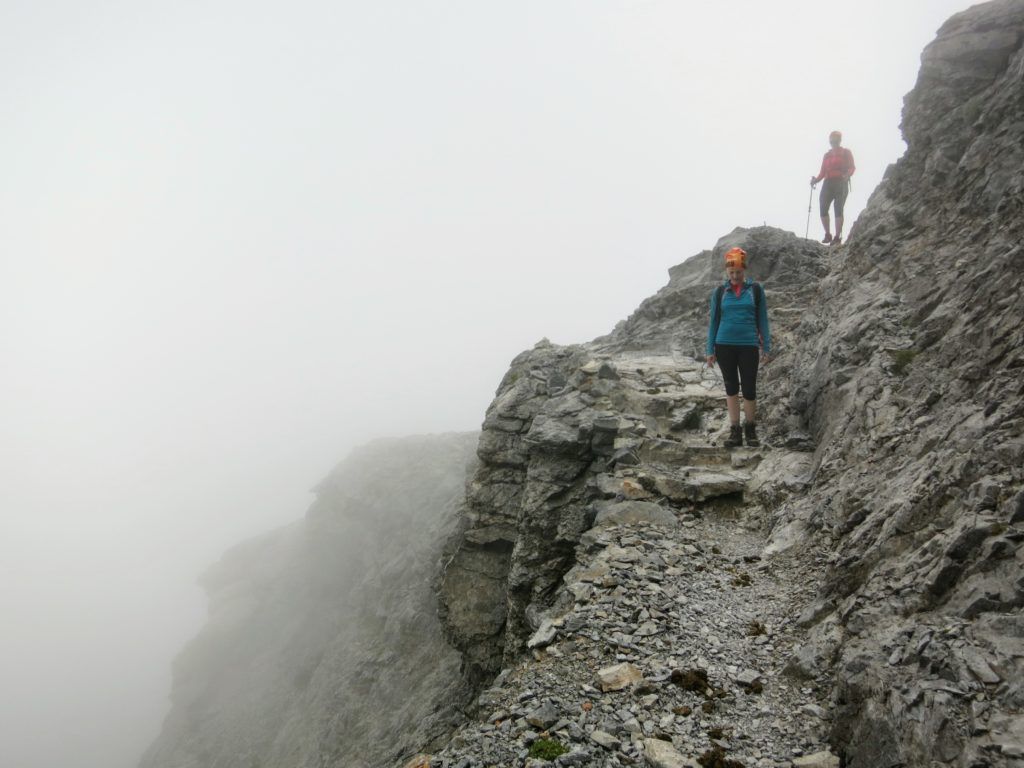
Trailheads
- Litochoro (300 m)
- Prionia (1100 m)
- Agios Konstantinos – near Dion (300 m)
- Gortsia (1000 m)
- Kokkinopylos (1170 m)
The most popular trail towards the summit of Mount Olympus start from the town of Litochoro (300 m) and follows the E4 route up to Skala Peak and from there to Mytikas. You can shorten this route by driving up to Prionia (1100 m).
A less beaten path starts from the village of Dion and follows the same route as the Olympus Marathon, reaching the Plateau of the Muses, passing by the Refuge C “Kakalos” and continuing to Zonaria from where you can climb to Mytikas.
Climbing to Mytikas
From Skala
The least technical, but still very exposed climb to Mytikas is from the Skala Peak.
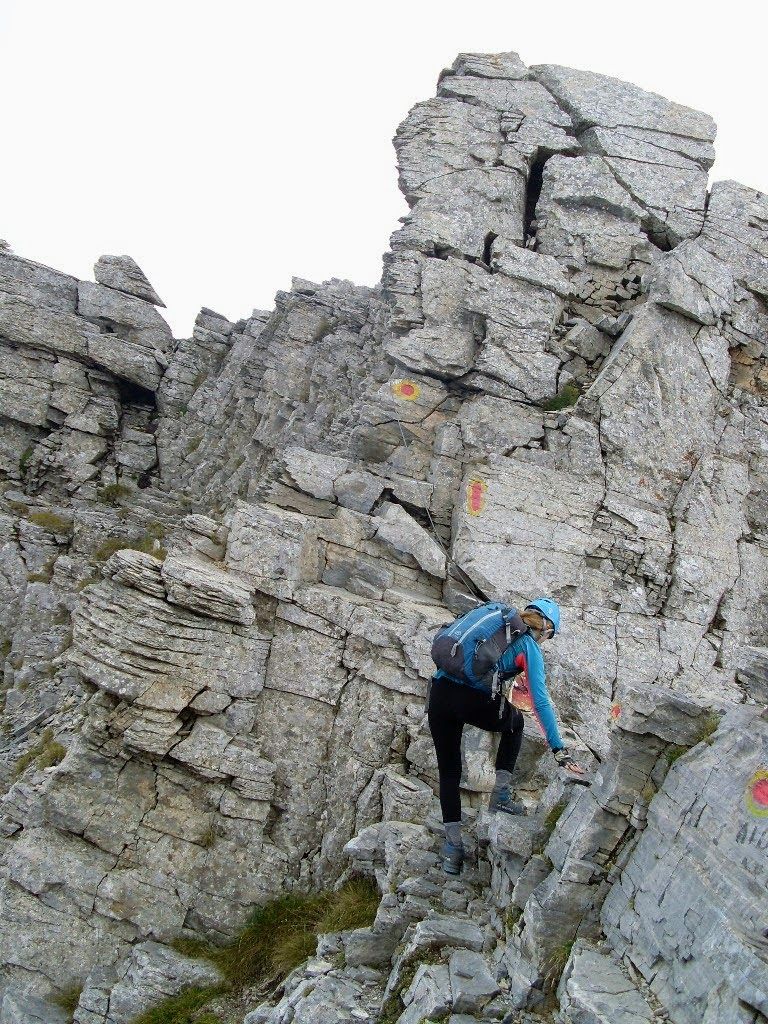
The Louki Corridor
A more technical climb starts from Zonaria, a narrow path that passes right below the heighest peaks. From Zonaria you can ascent directly to Mytikas via the Louki Corridor.
If you want to ascend via the Louki Corridor, you must wear a helmet. From what I’ve heard they may lend helmets for free at Refuge C.
The Louki Corridor is very steep and you will have to hold on to the rocks in order to climb to the top. It can be fun or scary, depending on how much you love or hate the heights. Read more about the difficulty of the climb here.
Important: While climbing the Louky Corridor make sure you don’t move the rocks as they may fall and hit the climbers below you. Do not hurry on the Louki Corridor.
Either if they attempt to climb to Mytikas from Skala or Louki, beginners may find the heights terrifying, but if they are assisted by someone more experimented, they should be able to safely reach the summit.
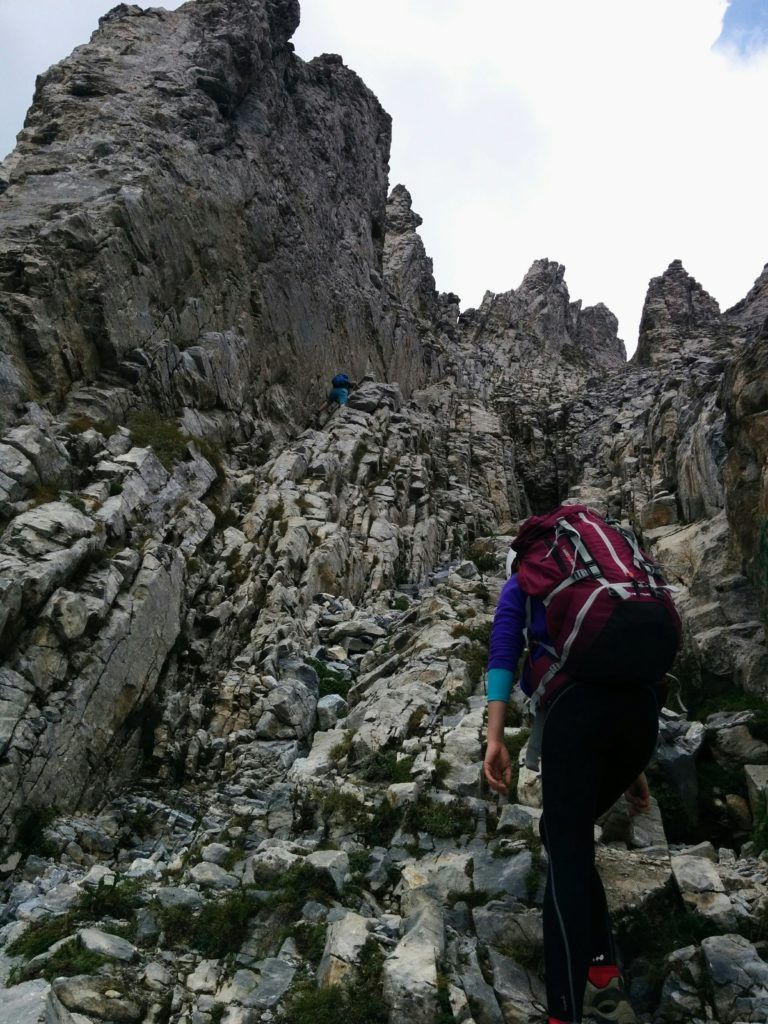
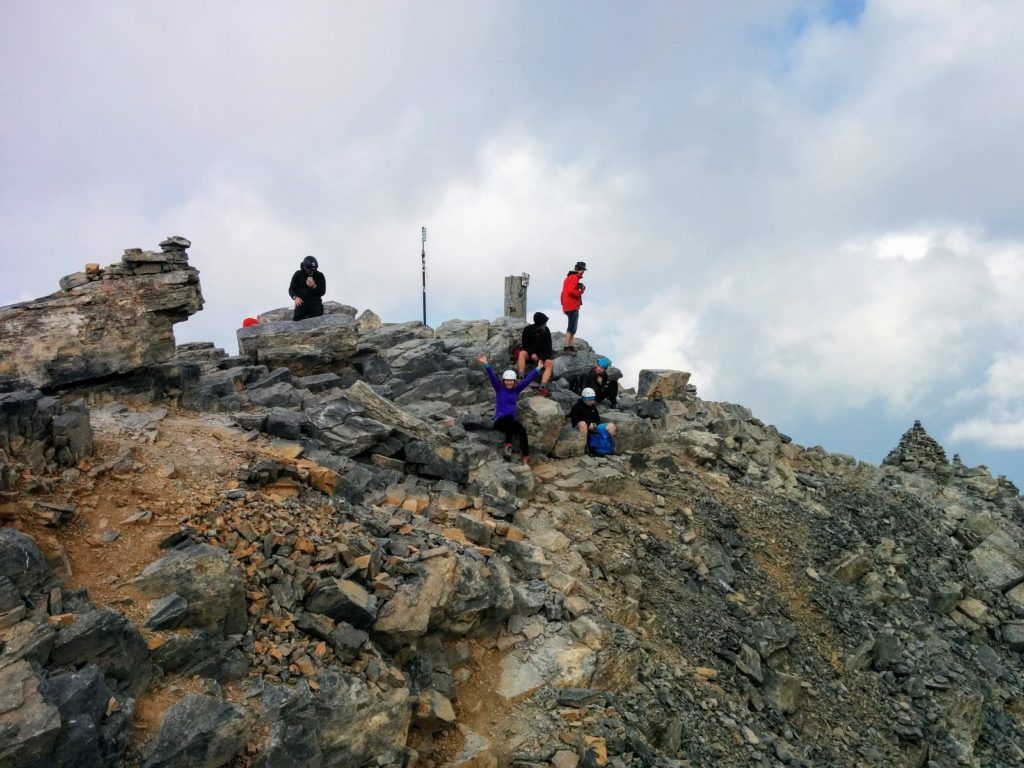
Hiking from Litochoro to Mytikas
Trailhead: Google Maps
Reaching the top of Mount Olympus from the town of Litochoro usually takes around 12 hours to go up and 9 hours to descent.
Since it’s very strenous to hike to Mytikas from Litochoro in the same day, you can either:
- split the hike in 2 days by spending a night at Refuge A Spilios Agapitos (2100 m) or Refuge C Kakalos (2700 m)
- drive to Prionia (1100 m) and start your hike to Mytikas from there.
Litochoro to Mytikas – INTERMEDIARY TIMES
- Litochoro (300 m) – Prionia (1100 m): 6 h
10 km, 1275 m D+, 468 m D- - Prionia (1100 m) – Refuge A “Spilios Agapitos” (2100 m): 3 h
6.5 km, 1071 m D+, 127 m D- - Refuge A “Spilios Agapitos” (2100 m) – Skala Peak (2882 m): 2.5 h
2.5 km, 866 m D+ - Skala Peak (2882 m) – Mytikas (2918 m): 1 h
400 m, 98 m D+, 69 m D-
Mytikas to Litochoro – INTERMEDIARY TIMES
- Descent from Mytikas (2918 m) to Zonaria via Louki or Kakoskala: 1 h
1 km, 270 m D- - Zonaria (2600 m) – Refuge A “Spilios Agapitos” (2100 m): 1.5 h
3 km, 667 m D- - Refuge A “Spilios Agapitos” (2100) – Prionia (1100 m): 2 h
6.5 km, 127 m D+, 1071 m D- - Prionia (1100 m) – Litochoro (300 m): 4 h
10 km, 468 m D+, 1275 m D-
The fastest way to get on Mount Olympus
Trailhead: Google Maps
The fastest way to climb Mount Olympus is by starting your ascent from Prionia, at 1100 meters above sea level, the highest you can get by car.
Round trip, this will be a 10 hour strenuous hike, 20 km long, with 2200 meters of elevation gain. This is the shortest route to Mytikas and the only way to get to the top of Mount Olympus and descend the same day unless you are an athlete.
Hiking from Prionia to Mytikas is a 6 hours, 10 km strenuous hike in which you will gain almost 2000 meters of elevation. You will pass by the Refuge A “Spilios Agapitos” where you can take a break and have something to eat.
Descending from Mytikas to Prionia will take around 4 hours.
Prionia is located 18 km West from the town of Litochoro. A taxi ride from Litochoro to Prionia costs around 35 EUR. The road up to Prionia is paved and in good condition and there is a parking lot at the end, in front of a restaurant.
Going to Prionia from Litochoro by car can save you up to 6 hours. However, you will miss the beautiful hike through the Enipeas Gorge.
Hiking to Mytikas from Dion
Trailhead: Google Maps
Dion is a village with several archaeological sites, located 12 km from Litochoro.
The Olympus Marathon is a trail running race that starts in the center of Dion and follows the same path the ancient Greeks took when they hiked Mount Olympus in order to bring offerings to the gods.
This is our favorite trail and we recommend splitting it in 2 days, like this:
Day 1: Ourlias Waterfall near Dion to Refuge C – Christos Kakalos
8 h, 14 km, 2550 m D+ 250 m D-
- Ourlias Waterfall (300 m) – Koromilia Refuge (1000 m): 3 h
4 km, 807 m D+, 140 m D- - Koromilia Refuge (1000 m) – Petroustruga Refuge (2000 m): 5 h
5 km, 973 m D+, 54 m D- - Petroustruga Refuge (2000 m) – Refuge C “Kakalos” (2600 m): 3 h
5 km, 780 m D+, 80 m D-
Note: You can save about 4 km and 700 meters of elevation gain by starting the hike from the parking lot at Gortsia (1000 m). From Gortsia you can reach the Petrostrouga refuge in about 2.5 hours and continue to Kakalos from there.
The start of the trail is at 300 meters above sea level, near the Ourlias Waterfall, about 5 km from the center of Dion. There is a parking lot nearby, but you can also park 1 or 2 km before, on the side of the road.
On the way to the summit you will travel through many types of vegetation and every 4 km you will pass by a refuge: Koromilia Refuge (1000 m), Petrostrouga Refuge (2000 m) and Refuge C – Kakalos (2600 m).
Spend the night at Refuge C if you manged to book a bed or camp next to it. From the refuge you can purchase food and drinks.
Day 2: Mytikas, Skala, Skolio and the Enipeas Gorge to Litochoro
23 km, 1000 m D+, 3300 m D-
- Refuge C “Kakalos” (2600 m) – Zonaria (2700 m): 3 h
1.6 km, 248 m D+, 185 m D- - Ascent to Mytikas (2918 m) via Louki: 1 h
322 m, 197 m D+ - Mytikas (2918 m) – Skala (2882 m): 1 h
440 m, 63 m D+, 99 m D- - Skala (2882 m) – Skolio (2911 m): 1 h
670 m, 63 m D+, 17 m D- - Skolio (2911 m) – Refuge A “Spilios Agapitos” (2100 m): 2.5 h
3.2 km, 850 m D- - Refuge A “Spilios Agapitos” (2100 m) – Prionia (1100 m): 2.5 h
6.5 km, 135 m D+, 1067 m D- - Prionia (1100 m) – Litochoro (300 m): 4 h
10 km, 468 m D+, 1275 m D-
From Refuge C head to Zonaria and climb to Mytikas via the Louki Corridor. From Mytikas go to Skala and then optionally make a detour to Skolio and back.
Descend from Skala to Refuge A and from there to Prionia. Once at Prionia, you can have a nice meal or drink at the restaurant and decide whether you want to continue by foot or by car.
The descent from Prionia to Litochoro through the Enipeas Gorge will be more like up and down and it can seem like it’s never ending especially after the effort you’ve put in so far. However, it’s beautiful and is completely worth it.
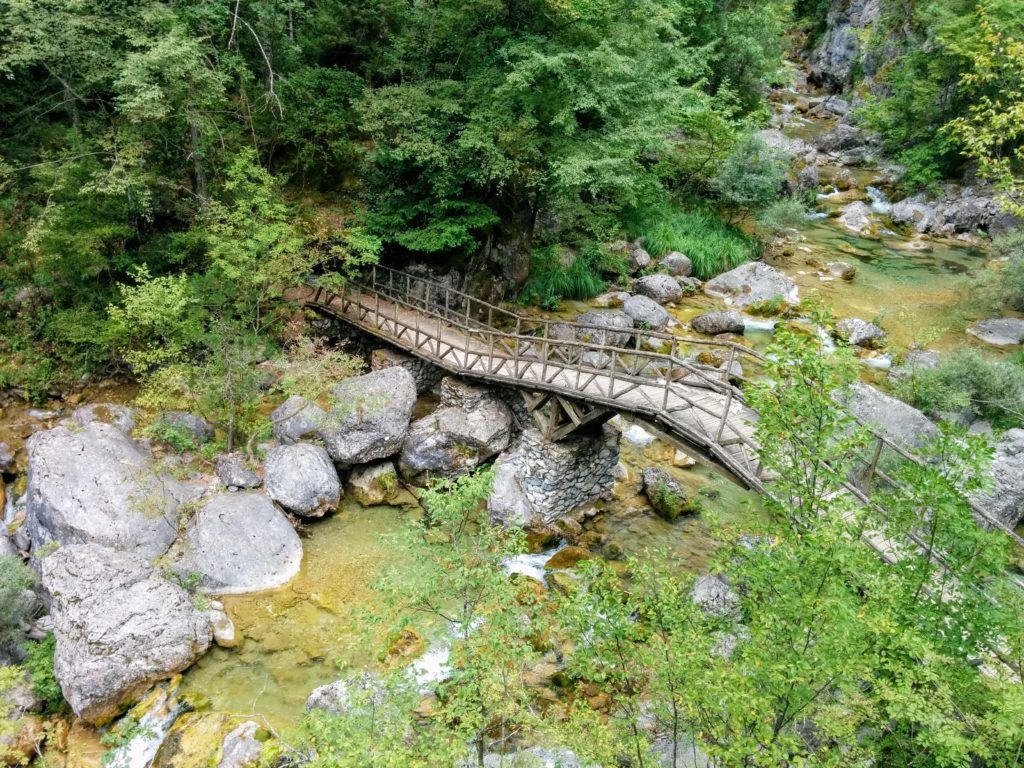
Accomodation near Mount Olympus
There are many accommodation options in both Litochoro and Dion and several campgrounds by the Aegean seashore. We always stayed at the campgrounds and enjoyed the relaxed atmosphere Greece is famous for.
The weather on Mount Olympus may not be always good for hiking and I can’t imagine of a better way to wait for the perfect window to climb the summit except for chilling by the seaside with a cold beer in my hand.
